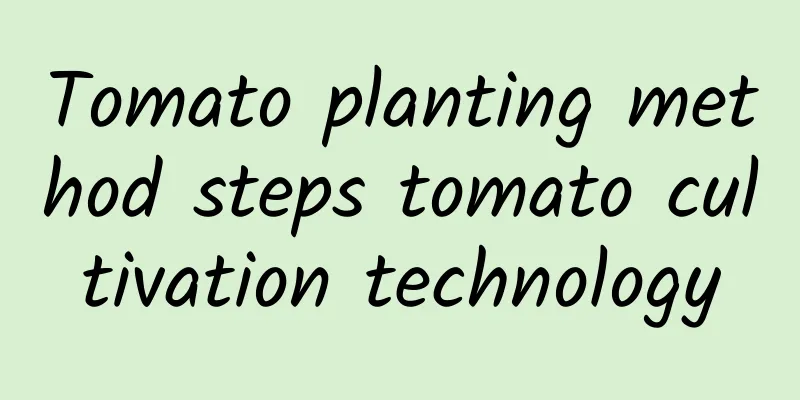Tomato planting method steps tomato cultivation technology

|
Before planting tomatoes, the selected seeds should be sealed and fermented at room temperature for about 2-4 days. After washing them with clean water, they should be soaked in warm water for 3-6 hours. This can increase the survival rate of tomatoes. Tomato Growing Conditions1. Lighting conditions Tomatoes are light-loving, short-day crops, but most varieties are not strict about sunlight requirements and do not require a specific light cycle. As long as the temperature is suitable, they can be cultivated throughout the year. However , they can only grow well under 16 hours of light conditions . 2. Moisture conditions The aboveground stems and leaves of tomatoes are lush, and the transpiration is relatively strong. The transpiration coefficient is about 800, and it requires more water . However, the tomato root system is very developed and has a strong water absorption capacity. The water requirement is semi-drought-tolerant, and the relative humidity of the air should be 45-50% . Tomato Planting Steps1. Plot selection Tomato planting should be done in areas with deep soil, good drainage and irrigation, good ventilation and air permeability , and where no solanaceous vegetables have been planted for 2-3 years. Avoid areas without irrigation facilities for cultivation. 2. Variety selection When planting tomatoes, you should choose varieties that are disease-resistant, high-quality, high-yielding, resistant to storage and transportation, have good commercial properties, and are suitable for market demand , such as Jintiewang, so that they can grow better after planting. 3. Sowing and seedling raising Tomatoes are usually planted in early March to early April each year . Use fertilizer balls to grow seedlings in a small arch shed, mix the soil with decomposed farmyard manure and knead it into a fertilizer ball about 5 cm in diameter, put a seed in it, arrange it evenly, cover it with nutrient soil, apply diluted manure water, and cover it with plastic film. Key points for high-yield management of tomatoes1. Fertilization management If you want to achieve high yields of tomatoes, you should mainly use organic fertilizers, and combine them with nitrogen, phosphorus, potassium and trace elements . Apply about 500 kg of fermented high-quality fertilizer per acre. This will have a significant effect on improving the quality and smoothness of the fruit. 2. Framework management After the tomatoes are planted, before each inflorescence sets fruit, the support should be inserted and the stems should be tied to the support with ropes from the top of the first fruit sequence. The binding should not be too loose or too tight . Later, tie it 2 to 3 more times depending on the growth height. |
<<: Lettuce planting method and steps, lettuce cultivation technology and time
>>: How to grow and care for the succulent Guanghan Palace
Recommend
Can gardenia be watered with beer?
1. Reasons ①Nutrients Generally speaking, beer is...
When is the best time to take cuttings of Clematis?
Clematis cutting time It is recommended to take C...
How to cultivate baby's breath
1. Temperature The suitable temperature for growi...
Cultivation methods and precautions of Tigerthorn
1. Soil The first thing to pay attention to when ...
How to grow azalea (introduction to home growing method)
1. Matrix When growing azaleas, you should prepar...
Can succulents be hydroponically cultivated? Hydroponics cultivation methods and precautions
Can succulents be grown hydroponically? Succulent...
How to water the flying feather arrowroot
Watering tips for the feather calathea The Feathe...
Does sugarcane need to be watered every day?
Is sugarcane watered every day? Sugarcane needs t...
Varieties of starflower
Starflower Varieties: “New Elephant” Series It is...
Camellia propagation methods and precautions
Cutting method The easiest way to propagate camel...
The peach eggs are as fat as pigeon eggs because they were watered with this kind of water. I can save money on fertilizer!
Peach egg is fed with some tonic medicine, and th...
How to cultivate coral beads
Coral Bead Growth Conditions Coral beads prefer a...
How to grow Helleborus in winter and how low of a temperature can it withstand
1. How to keep it in winter 1. See more sunlight:...
How are mushrooms grown? How to grow mushrooms? Come in and find out
How are mushrooms grown? Mushrooms are plants wit...
Only grow these two kinds of "flowers" in winter, especially the second one, which can survive at minus 8 degrees Celsius
1. Schlumbergera When choosing soil for growing C...









